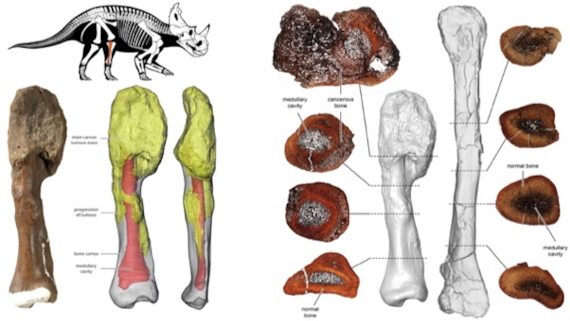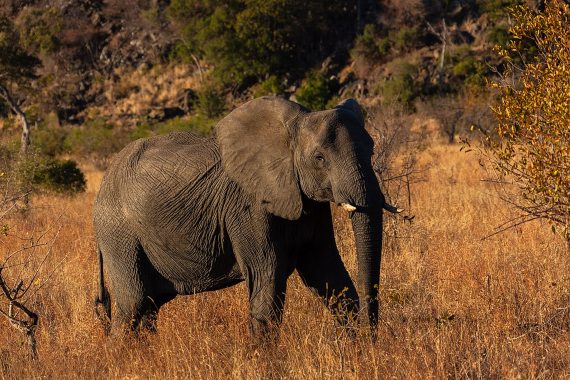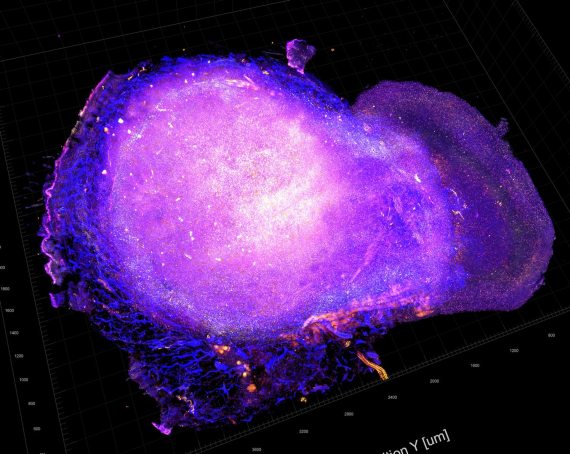76 million years ago, one herbivorous dinosaur from the species Centrosaurus apertus—a relative of the better known Triceratops—walked with great difficulty, perhaps with intense pain. It died along with other members of its herd, probably drowned by a flash flood. But the disease it suffered from would have ended up killing it eventually: osteosarcoma, bone cancer, in an advanced state. The finding, recently published in The Lancet Oncology, is one more piece of evidence that helps us to answer a longstanding question: Is cancer a modern disease, brought about by environmental factors linked to our—not always very healthy—lifestyle, as is sometimes said? Or is it something almost as old as life itself, just an undesirable consequence of our own biology?
The aforementioned centrosaurus is, according to the study, the first confirmed case of cancer in dinosaurs: “To date, to our knowledge, no cases of malignant cancer have been reported in dinosaurs with sufficient reliability to be considered confirmed, at least by modern medical standards, which require biopsy and examination at the cellular level,” the authors write. However, it is not the first suspicious case in prehistoric animals; others had previously been documented in dinosaurs, although without the level of accuracy of the current one, along with even older examples in fish from the Palaeozoic period, more than 300 million years ago. Also in 2020, a rare possible type of cancer called Langerhans cell histiocytosis was described in a hadrosaur, a beaked dinosaur that lived in the Cretaceous period. According to the authors of the centrosaurus study, “evidence suggests that malignancies, including bone cancers, are rooted quite deeply in the evolutionary history of organisms.”

A man-made disease
And yet, we often hear a somewhat different message, that cancer is a modern human disease caused by the harmful environmental factors to which our way of life exposes us. In 2010, two researchers from the universities of Manchester and Villanova cited the limited detection of cancers in Egyptian mummies to conclude that “cancer was rare in antiquity, and so poses questions about the role of carcinogenic environmental factors in modern societies.” According to the study’s co-author, Egyptologist Rosalie David, “there is nothing in the natural environment that can cause cancer. So it has to be a man-made disease, down to pollution and changes to our diet and lifestyle.”
However, the study sparked a wave of feedback. Cancer experts countered David’s words by providing examples of natural carcinogenic factors, from ultraviolet light from the Sun to chemical compounds found in moulds and plants. In his blog in Science magazine, chemist Derek Lowe warned against what he called the Garden of Eden effect, the idea that “there was a time—long ago—when people were in harmony with nature, ate pure, wholesome natural foods (the kind that we were meant to eat), and didn’t have all the horrible problems that we have in these degenerate modern times.“
Interactive timeline: the Fight against Cancer
The natural vulnerability of animal cells
The truth is that not only do the first descriptions of cancer and even its very name date back to the antiquity of classical Greece, but signs of the disease have been found in fossils of African hominins up to 1.7 million years old. And as for animals, the idea that certain species never suffer from cancer is more myth than reality; cases have even been found in the naked mole-rat, the animal often used as an example of this phenomenon. In these peculiar animals, a recent study suggests that their cells are not intrinsically more resistant to cancer than those of other species, but that there may be other immune or microenvironmental factors that protect them. In other words, there is a natural vulnerability of animal cells to cancer, which the internal mechanisms themselves fight to prevent.
For example, in elephants, a species with a low incidence of cancer, its genome has been found to possess multiple copies of p53, a tumour suppressor gene known as the “guardian of the genome” because of its role in keeping harmful mutations at bay. These and other cellular mechanisms are what show us that cancer, more than being a consequence of our society, is a result of our biology; for example, the osteosarcoma found in the centrosaurus usually occurs in humans during adolescence, when bones grow rapidly. Tumour suppressors are in charge of keeping an eye out for cancer, but they are not infallible.

“Cancer is not a modern disease but has been present in both humans and animals since the very early dawn of life,” Andreas Nerlich, a paleopathologist at the Bogenhausen Academic Hospital in Munich, told OpenMind. This expert, who has studied the incidence of cancer in ancient populations of Egypt and the Middle Ages without finding much difference with those of the industrial era, acknowledges that today the disease is much more frequent, but attributes it with a cause: “longer life expectancy, and possibly also thereby the longer incubation of carcinogenic substances and viral infections with potential carcinogenic influence.”
A disease of old age
“Cancer is a disease of old age,” Manuel Serrano, a researcher at the Institute for Research in Biomedicine in Barcelona and an expert in tumour suppressor genes, tells OpenMind. Serrano explains that this is the reason why in ancient times these ailments were less frequent: “Reaching 50 was also very rare! Before that, few people reached the age of 80.” In addition, Serrano adds that in the past many cases went unnoticed: “Only those that manifested themselves externally because a lump literally appeared were diagnosed as cancer.“
Serrano also points out that possibly the most frequent types of cancer have changed compared to ancient times, given that, elaborating on Lowe’s Garden of Eden effect, “life in antiquity was not the idealization that some have in mind.” “It is known that people inhaled toxins in unimaginable quantities due to the fires that were made inside caves, huts and cabins,” he explains. “In their dwellings, children, adults and the elderly breathed in smoke from fires every day.” Another example that Serrano highlights is food, which in earlier times was often consumed in poor condition. “Rotten food is full of bacteria and fungi that are known to contain carcinogens.”

Finally, the researcher points out, modern drugs free us from chronic infections that are also a risk factor for cancer. “In my opinion, we live much better than before, we live much longer than before, and therefore diseases typical of old age are more common,” he concludes.
Comments on this publication